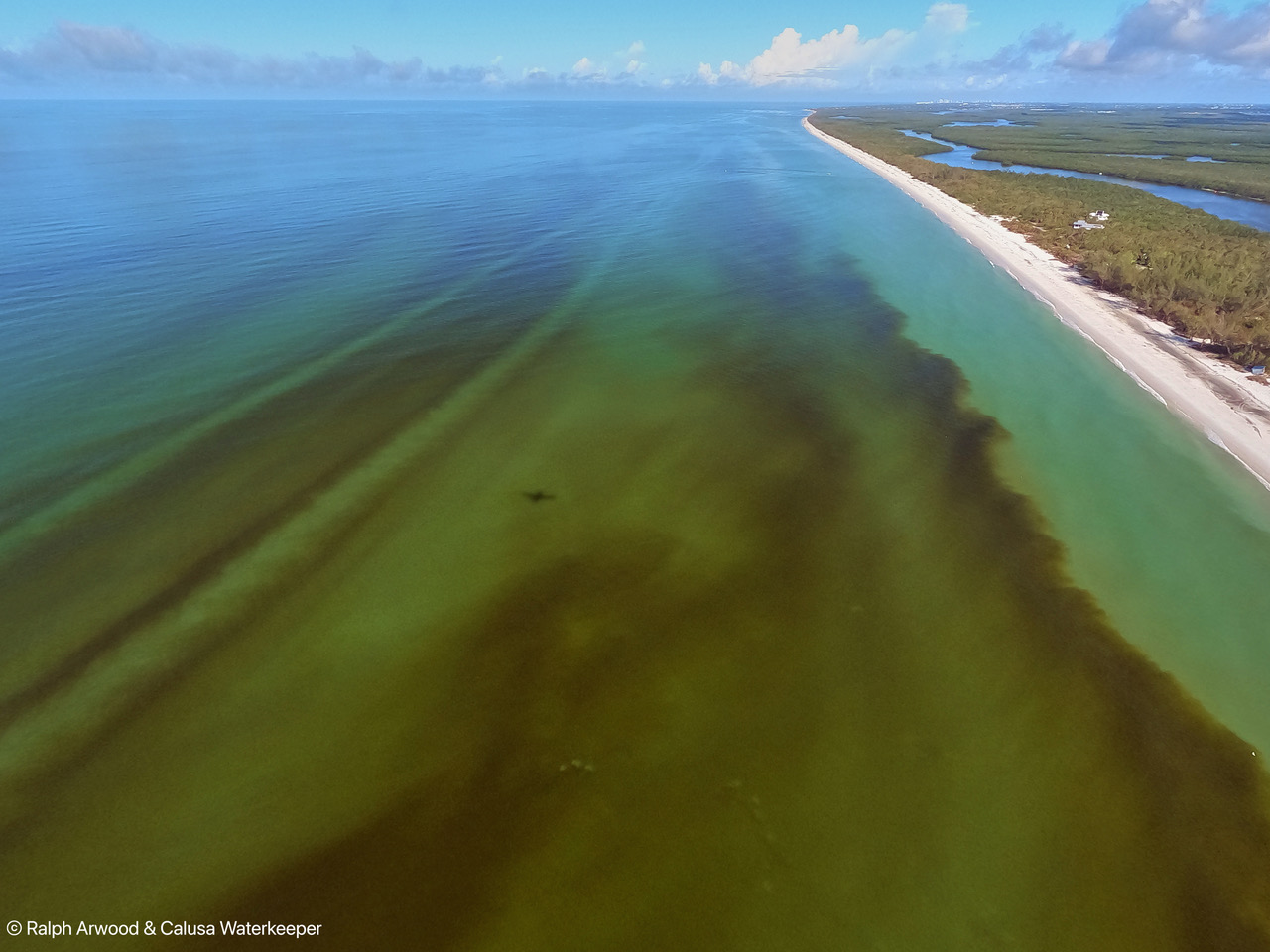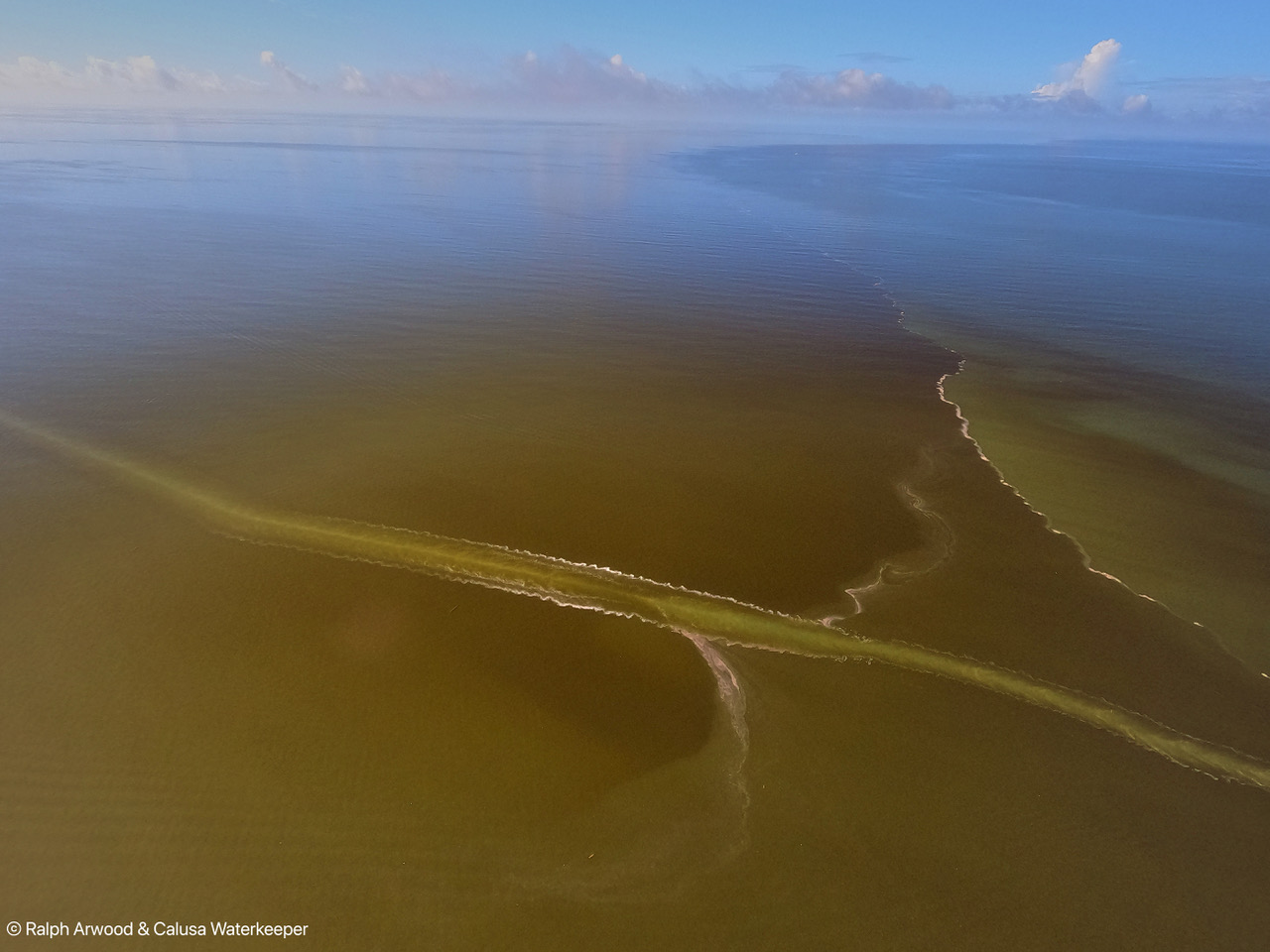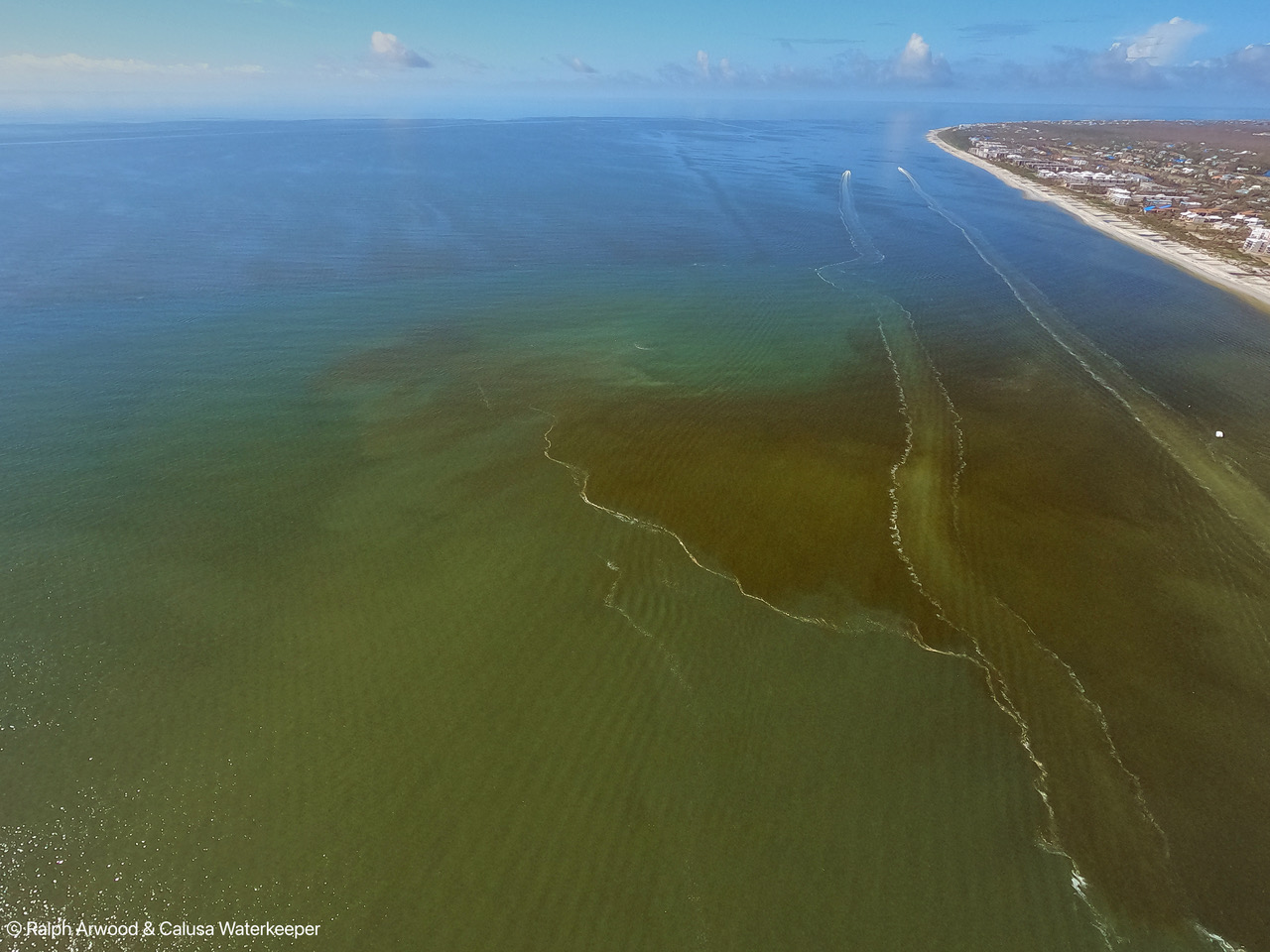Photos show toxic algae blooms plaguing southwest Florida waters – Runoff from Hurricane Ian suspected

By Dylan Abad
14 November 2022
TAMPA, Florida (WFLA) – Aerial photos revealed massive plumes of red tide stretching along much of southwest Florida’s coast days after Tropical Storm Nicole passed over the state.
Photos released by Calusa Waterkeeper showed a deep reddish-brown discoloration of the water near Naples and Sanibel due to the presence of red tide “and other phytoplankton species,” the non-profit organization said in a Facebook post.
According to the Florida Fish and Wildlife Conservation Commission, beaches from Sarasota to Port Charlotte vary between low, medium, and high levels of red tide.
The harmful algal blooms are commonly known to cause mild and short-lived respiratory symptoms in humans such as eye, nose, and throat irritation like those associated with the common cold or seasonal sinus allergies, the Florida Department of Health said.
Blooms are also known to last for months, depending on wind conditions.

Last, week WFLA Meteorologist Amanda Holly predicted onshore winds would bring respiratory irritation and red tide smells inland.
“It really helps to bring a red tide smell,” Holly said. “It can cause irritation if you’re affected by it.”
Scientists have been trying to determine if recent activity in the tropics has led to an increase in red tide advisories. Runoff, from heavy rains, for example, is one of the major factors that can exacerbate a bloom.
As rainfall runoff moves into the Gulf of Mexico, it brings with it nutrient-rich water necessary for algal growth.
Health officials recommend people who are sensitive to red tide or are experiencing symptoms avoid the beach or go into an air-conditioned space.
Photos show contaminated water plaguing southwest Florida

Did Hurricane Ian impact Florida’s latest red tide bloom?
By Heather Monahan and Amanda Holly
28 October 2022
TAMPA, Florida (WFLA) – It’s been a month since Hurricane Ian made landfall in southwest Florida, and red tide is now back along the Gulf Coast.
Red tide is a harmful algal bloom that occurs when there is a higher-than-normal concentration of microscopic algae, according to the Florida Fish and Wildlife Conservation Commission. The species that causes most red tides in Florida and the Gulf of Mexico is Karenia brevis, or K. brevis. A large concentration of cells during a bloom can discolor water, making it appear reddish or brown.
Red tides occur naturally in Florida but, according to Mote Marine, human-contributed nutrients and nutrient pollution can feed the growth of red tide, making them more severe.
Since Hurricane Ian brought so much rain to Florida last month, scientists on the coast have been closely monitoring water quality to see if the storm had any impacts.
“It is very difficult to link – directly link – cause and effects to red tide,” Meteorologist Amanda Holly said. “Because red tide, that algae bloom, is very much naturally-occurring. Especially well out in the Gulf of Mexico.”
Runoff from heavy rains, however, is one of the things that can exacerbate a bloom. Stunning aerial images taken after the storm showed darker-colored water returning to the Gulf of Mexico as runoff.
“Seeing those pictures of that dark water coming out was not a surprise because we had a lot of rainfall, a lot of runoff coming into our coastal waters and the question is, how much of that was nutrients?” Dr. Tracy Fanara, an environmental engineer and hydrologist, said. “It is just common sense that there would be nutrients associated with a lot of those particles coming into the coastal waters, however, there is a lot of other things as well.”

A total of 10 to 20 inches of rain fell along Ian’s path that cut across the state, through central Florida.
“And what happened to all of that rain? Well it had to eventually try and make its way to the rivers. But as it’s making its way to the rivers, it’s running through a lot of dead vegetation – dead leaves, all those downed trees from Ian,” Holly explained. “Along the way, it’s picking up nutrients from that decaying vegetation – things like nitrates and phosphates. And that’s what the algae bloom feeds off of.”
That means as the excess water from the rainfall moves toward the Gulf of Mexico, the algae starts to grow thanks to the nutrient-rich water.
“Luckily it’s isolated areas and that’s what we’re seeing right now where that water is coming offshore,” Holly said.
The latest red tide status update from the FWC shows background to high concentrations in Sarasota County, very low concentrations in Charlotte County, and background concentrations offshore of both Manatee and Lee counties.
Thankfully, Holly said there are a few things that are working in our favor at the moment.
“We’re coming out of the peak months for red tide,” she said. “That’s because our water temperatures are getting cooler and we’re not expecting very heavy rains here over the next week or month.”


